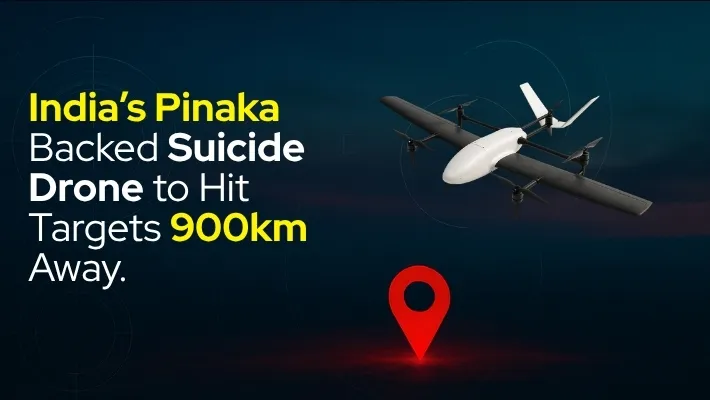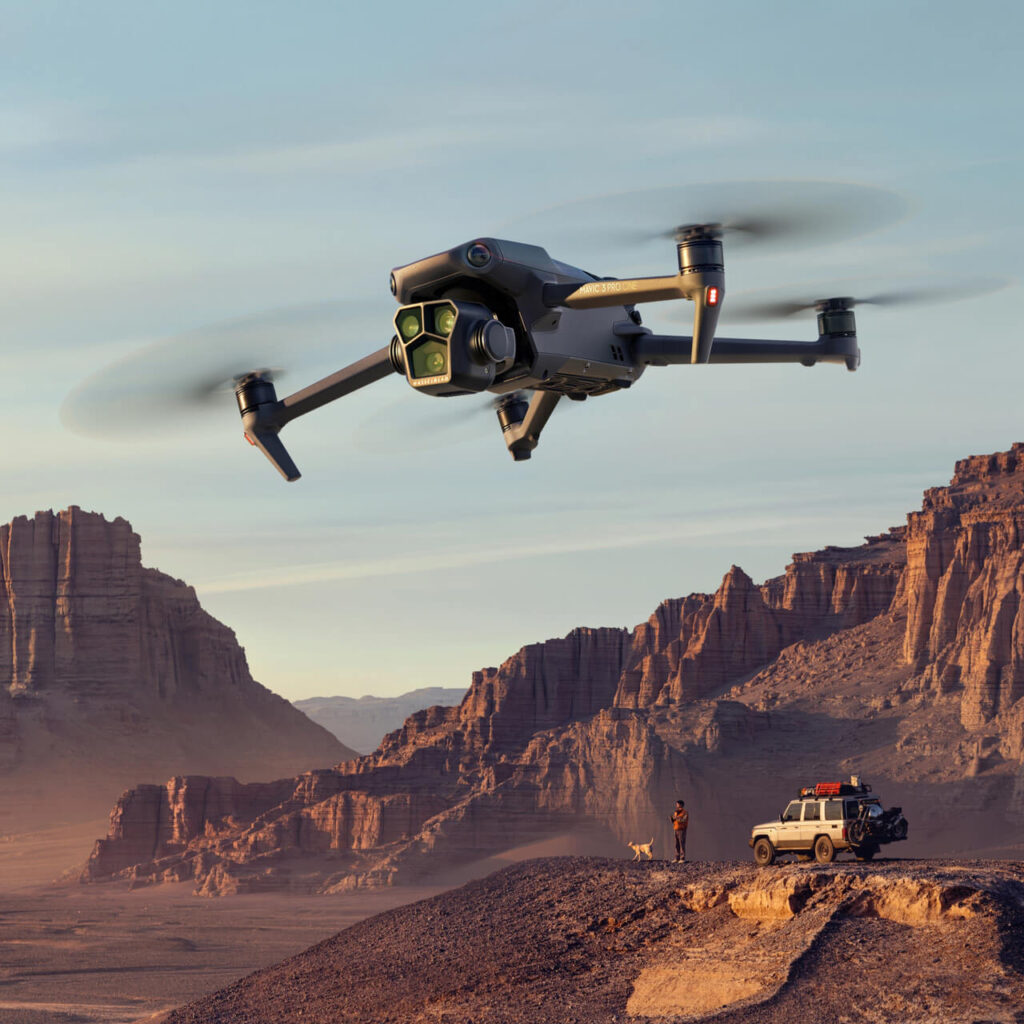The roar of combat drones has become the soundtrack of modern warfare, and India isn’t just listening—it’s composing its own symphony of destruction. While the world debates the ethics of autonomous weapons, India is forging ahead with a game-changing development: a suicide drone with a staggering 900-kilometer range, backed by the same technology that made the Pinaka rocket system a global success story. This isn’t just another military procurement; it’s a declaration of India’s intent to dominate the autonomous warfare landscape.
Speaking of drones, if you’re looking to start your own drone journey or explore the fascinating world of unmanned aerial vehicles, Jetayu Gadgets offers an impressive range of commercial and professional drones perfect for beginners and experts alike. From surveillance to recreational flying, their collection provides the perfect entry point into this rapidly evolving technology.
The Dawn of India’s Long-Range Suicide Drone Era
India’s Council of Scientific and Industrial Research – National Aerospace Laboratories (CSIR-NAL) issued a Request for Proposal (RFP) on August 23, 2024, for developing this revolutionary suicide drone. The technical bid evaluation was completed on March 24, 2025, with Solar Industries—the company behind the successful Pinaka rocket system—emerging as the frontrunner.
The country is rapidly advancing toward developing an indigenous suicide drone with a range exceeding 900 kilometers, which will significantly strengthen the nation’s defense capabilities. This development represents a paradigm shift in India’s defense strategy, moving from reactive to proactive warfare capabilities.
Why This Matters: The Strategic Implications
The 900-kilometer range isn’t just a number—it’s a strategic game-changer. This range allows India to:
- Strike deep into enemy territory without risking human pilots
- Neutralize high-value targets including command centers, radar installations, and missile batteries
- Provide extended battlefield surveillance before executing precision strikes
- Maintain plausible deniability through autonomous operations
Technical Specifications and Capabilities
Range and Payload Analysis of Suicide Drones
| Specification | Details |
|---|---|
| Maximum Range | 900+ kilometers |
| Payload Type | High-explosive warhead with GPS-guided precision |
| Accuracy | GPS-enabled precision strike with an accuracy of 2 meters |
| Operational Mode | Autonomous and semi-autonomous |
| Launch Platform | Ground-based mobile launcher |
Cost-Effectiveness Revolution
Current indigenous suicide drones like the Kharga Kamikaze are built at a cost of just ₹30,000 per unit, making them incredibly cost-effective compared to traditional missiles. The 900-kilometer range variant is expected to cost significantly more due to its advanced propulsion and navigation systems, but will still offer exceptional value compared to conventional alternatives.
The Pinaka Connection: From Rockets to Suicide Drones
Solar Industries, the company that achieved remarkable success with the Pinaka rocket system, is leading the charge in developing this extended-range suicide drone. The Pinaka connection isn’t coincidental—it represents the evolution of India’s rocket technology into the autonomous weapons domain.
What Makes This Partnership Successful?
- Proven Track Record: Solar Industries has demonstrated expertise in precision guidance systems
- Manufacturing Infrastructure: Existing facilities can be adapted for drone production
- Quality Control Systems: Established testing and validation protocols
- Export Potential: Building on Pinaka’s international success
Current Suicide Drone Arsenal: Building the Foundation
The Indian Army has already received its first batch of indigenous suicide drones using emergency procurement powers, delivered within a year to address urgent needs along the Pakistan and China borders.
Existing Platforms:
- Nagastra-1: Man-portable suicide drone capable of neutralizing hostile threats in ‘kamikaze mode’
- Kharga Kamikaze: High-speed suicide drone capable of intelligence, surveillance, and strike roles
- Loitering Munition Systems: Low-Cost Miniature Swarm Drones used in Operation Sindoor
While these developments in military technology are fascinating, drones are increasingly being used for civilian applications too. Recent innovations show how drones are catching illegal tree cutters in action, providing forest departments with unprecedented surveillance capabilities to protect India’s precious forest resources. These conservation efforts demonstrate the versatility of drone technology beyond military applications.
Manufacturing Timeline and Investment
The project involves an investment of approximately ₹12,700 crore, focusing on expanding production capabilities, indicating the government’s serious commitment to this technology.
Development Phases:
- Phase 1 (2024-2025): Technical specification finalization and prototype development
- Phase 2 (2025-2026): Testing and validation across different terrains
- Phase 3 (2026-2027): Mass production and integration with existing systems
- Phase 4 (2027-2028): Export version development and international marketing
Strategic Advantages Over Traditional Weapons
Operational Benefits:
- Stealth Capability: Small radar cross-section makes detection difficult
- Persistent Surveillance: Can loiter over target areas for extended periods
- Adaptable Mission Profile: Can switch between reconnaissance and strike modes
- Reduced Collateral Damage: Precision targeting minimizes civilian casualties
Economic Advantages:
- Lower Unit Cost: Significantly cheaper than cruise missiles
- Reduced Maintenance: No recurring pilot training or aircraft maintenance costs
- Scalable Production: Can be manufactured in large quantities quickly
- Export Potential: Attractive to international customers seeking cost-effective solutions
Integration with Modern Crime Fighting
The technology being developed for military applications is finding innovative uses in civilian law enforcement. Dogs on the ground, drones in the sky: India’s new crime-fighting duo for tracking down suspected stolen cars represents an exciting convergence of traditional investigation methods with cutting-edge drone technology. This dual-use capability makes investments in drone technology even more valuable for national development.
Regional Impact and Global Positioning
Strategic Deterrence:
The 900-kilometer range positions India’s suicide drones as a significant deterrent against regional adversaries. This capability allows India to:
- Project Power: Demonstrate reach without revealing full military capabilities
- Maintain Strategic Balance: Counter similar developments by neighboring countries
- Support Diplomatic Initiatives: Provide military backing to foreign policy positions
- Enhance Export Credentials: Establish India as a reliable defense technology partner
Competitive Analysis:
| Country | Platform | Range | Status |
|---|---|---|---|
| India | Pinaka-backed drone | 900+ km | Under development |
| Israel | HAROP | 1,000 km | Operational |
| Turkey | Kargu-2 | 10 km | Operational |
| USA | Switchblade 600 | 80 km | Operational |
| China | WS-43 | 60 km | Operational |
Future Implications and Challenges
Technical Challenges:
- Extended Range Navigation: Maintaining accuracy over 900 kilometers
- Communication Systems: Ensuring reliable command and control
- Electronic Warfare Resistance: Protecting against jamming and spoofing
- Weather Adaptation: Operating in diverse climatic conditions
Ethical and Legal Considerations:
The development of autonomous weapons raises important questions about:
- Rules of Engagement: Defining when and how these systems can be used
- Command Responsibility: Ensuring human oversight in critical decisions
- International Law Compliance: Adhering to Geneva Conventions and other treaties
- Export Controls: Managing technology transfer to international customers
Economic Impact and Job Creation
The suicide drone program is expected to generate significant economic benefits:
Direct Employment:
- Research and Development: 2,000+ high-skilled engineering positions
- Manufacturing: 5,000+ production and assembly jobs
- Testing and Validation: 1,000+ specialized technical roles
- Support Services: 3,000+ logistics and maintenance positions
Supply Chain Development:
- Component Manufacturing: Boosting local electronics industry
- Raw Material Suppliers: Increased demand for specialized materials
- Testing Infrastructure: Development of new testing facilities
- Export Support: Creating international marketing and support networks
Conclusion: India’s Autonomous Future
India’s 900-kilometer range suicide drone will make enemies “cry tears of blood” and, building on the success of Pinaka, will take India’s military capabilities to new heights. This isn’t just about building another weapon system—it’s about establishing India as a global leader in autonomous warfare technology.
The convergence of Solar Industries’ proven expertise with Pinaka rockets and the urgent need for extended-range precision strike capabilities has created the perfect storm for innovation. As India moves forward with this ambitious project, the world watches with a mixture of admiration and concern.
The ₹12,700 crore investment represents more than just military spending—it’s an investment in India’s technological sovereignty and strategic autonomy. As the country continues to face complex security challenges along its borders, the 900-kilometer suicide drone stands as a testament to India’s commitment to defending its interests through indigenous innovation.
The future of warfare is autonomous, and India is ensuring it won’t be left behind. From the proven success of Pinaka to the promising development of extended-range suicide drones, India is writing the next chapter in military technology—one that will resonate far beyond its borders and deep into the future of global defense.




